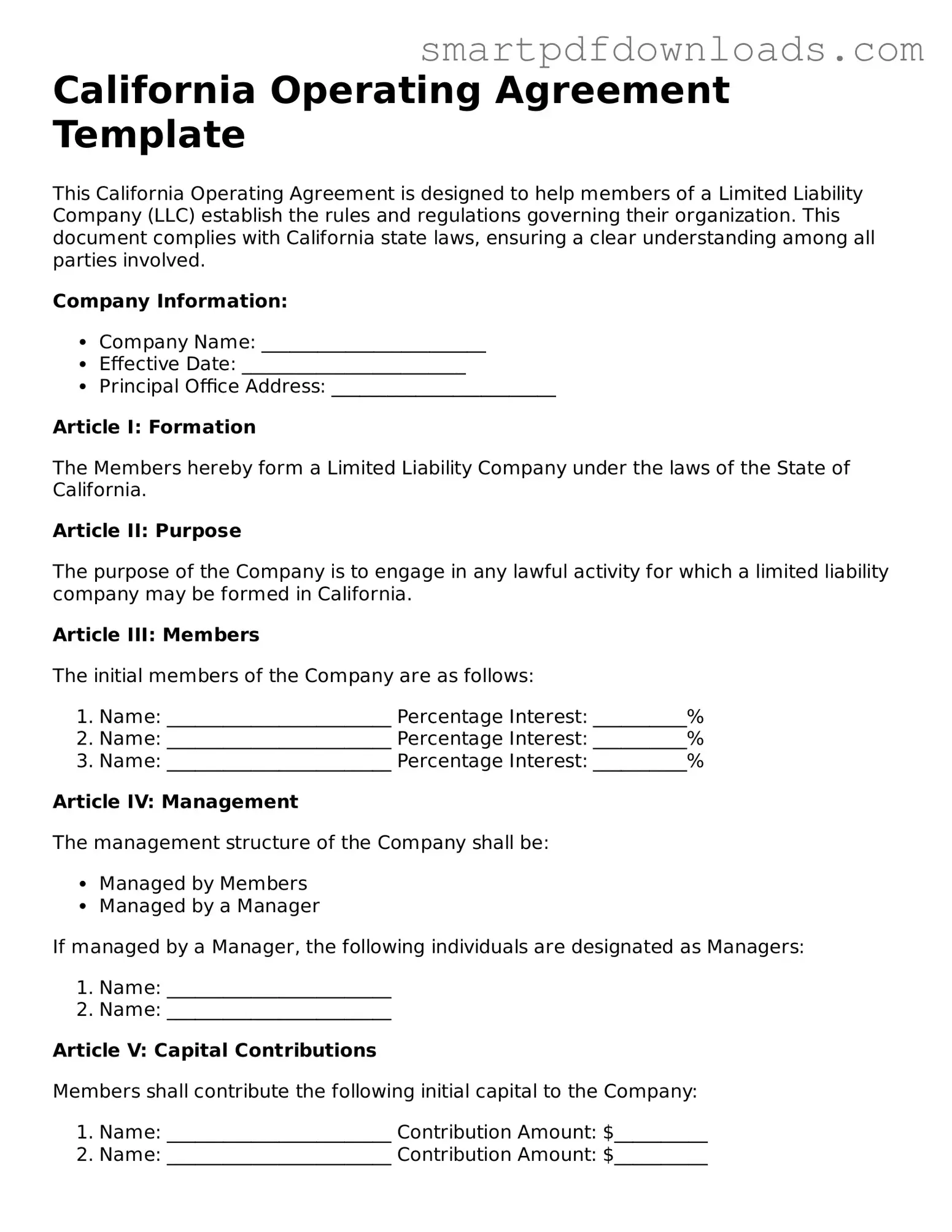California Operating Agreement Template
This California Operating Agreement is designed to help members of a Limited Liability Company (LLC) establish the rules and regulations governing their organization. This document complies with California state laws, ensuring a clear understanding among all parties involved.
Company Information:
- Company Name: ________________________
- Effective Date: ________________________
- Principal Office Address: ________________________
Article I: Formation
The Members hereby form a Limited Liability Company under the laws of the State of California.
Article II: Purpose
The purpose of the Company is to engage in any lawful activity for which a limited liability company may be formed in California.
Article III: Members
The initial members of the Company are as follows:
- Name: ________________________ Percentage Interest: __________%
- Name: ________________________ Percentage Interest: __________%
- Name: ________________________ Percentage Interest: __________%
Article IV: Management
The management structure of the Company shall be:
- Managed by Members
- Managed by a Manager
If managed by a Manager, the following individuals are designated as Managers:
- Name: ________________________
- Name: ________________________
Article V: Capital Contributions
Members shall contribute the following initial capital to the Company:
- Name: ________________________ Contribution Amount: $__________
- Name: ________________________ Contribution Amount: $__________
Article VI: Distributions
Distributions of profits and losses shall be made in proportion to each Member's percentage interest in the Company.
Article VII: Indemnification
The Company shall indemnify any Member or Manager against expenses and damages incurred in relation to the Company.
Article VIII: Amendments
This Operating Agreement may be amended only by a written agreement signed by all Members.
Article IX: Governing Law
This agreement shall be governed by the laws of the State of California.
IN WITNESS WHEREOF, the Members have executed this Operating Agreement as of the date first above written:
__________________________ __________________________ __________________________
Member Signature Member Signature Member Signature
Date: ________________________
